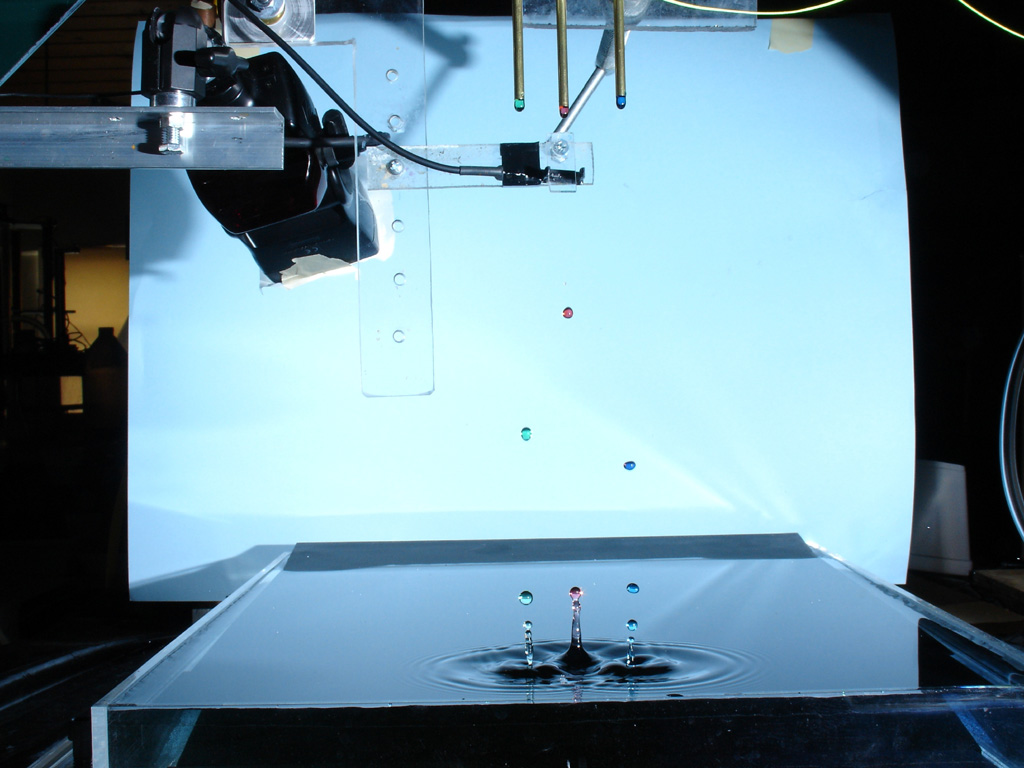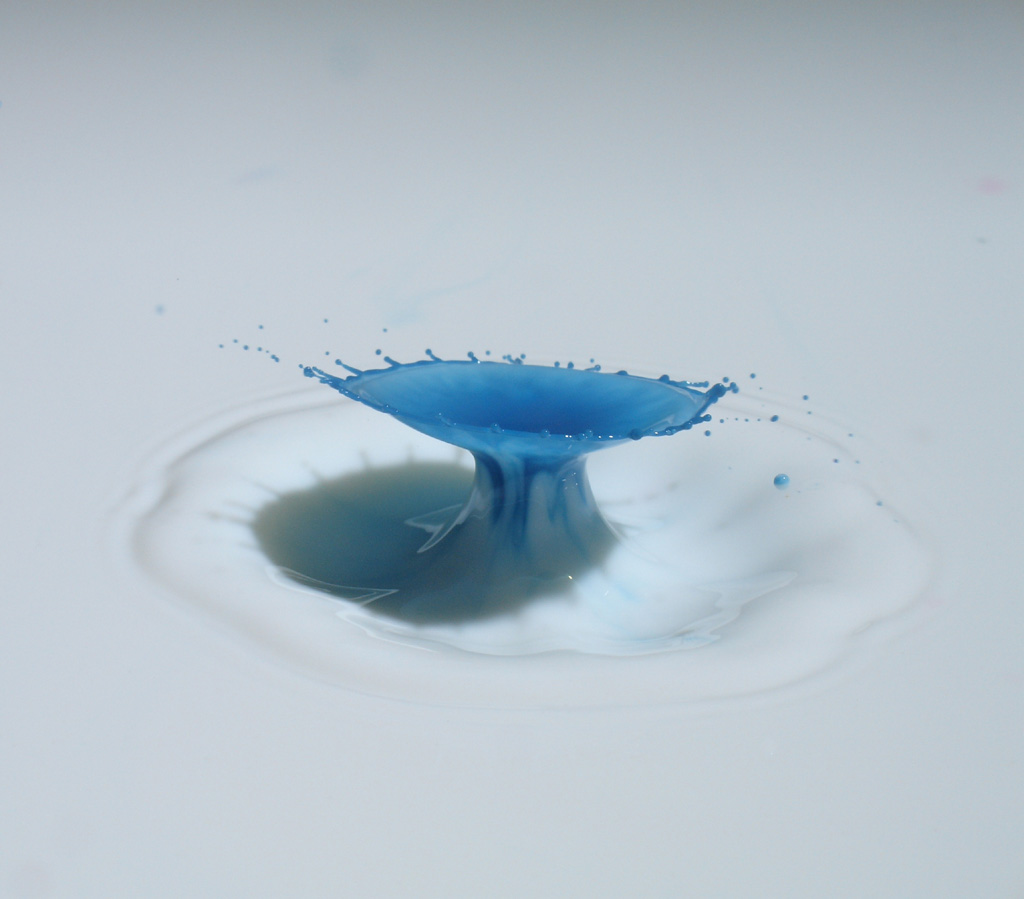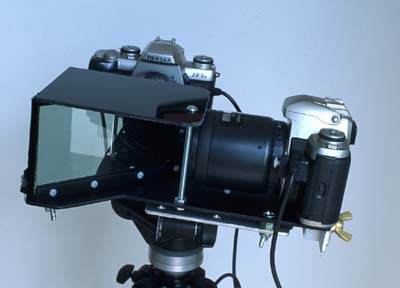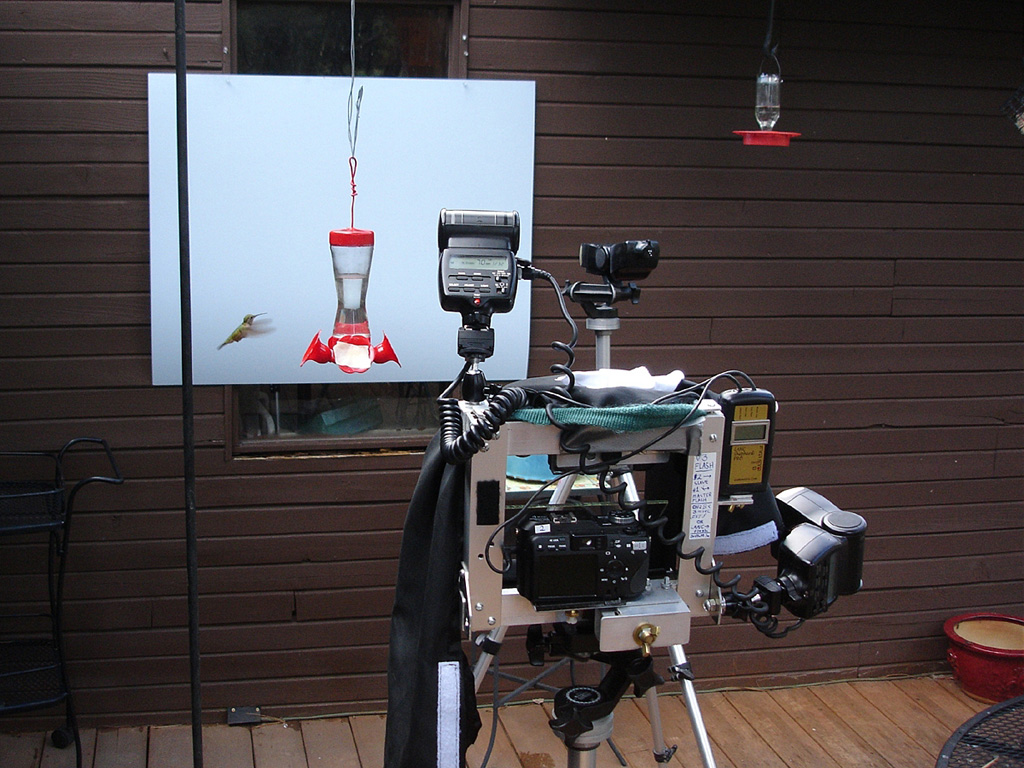High - Speed Liquid Drops and Hummingbirds in 3D
Photography is with a dual camera beamsplitter rig. The beamsplitter permits the effective separation of the cameras to be 1 centimeter, or even less (2mm was used for the train project video). Such small separations are required for getting reasonable stereoscopic depth for these small subjects. Beamsplitters are commonly used in 3D macro work, like hummingbird photography, where a narrow effective stereobase is again needed. For both these subjects, a Pentax flash, turned to lowest power (and hence shortest duration of about 1/30,000 sec) was just adequate for these high speed events. For the droplets, the flashes were set off by a delayed trigger derived from a droplet near the nozzle crossing a light beam. For the hummingbirds, the system was fired by hand.
CCW from upper right: Blue-dyed milk drop hits a rising tower, 3-nozzle setup, a 3D macro rig, macro hummer setup.
|
© Hart3D - All Gallery images and videos are copyrighted John Hart. All rights reserved. No part of these pages, either text, videos, or images, may be used for any purpose other than for personal viewing. Reproduction, modification, storage in a retrieval system or retransmission, in any form or by any means, electronic, mechanical, or otherwise, is strictly prohibited without prior written permission.
|

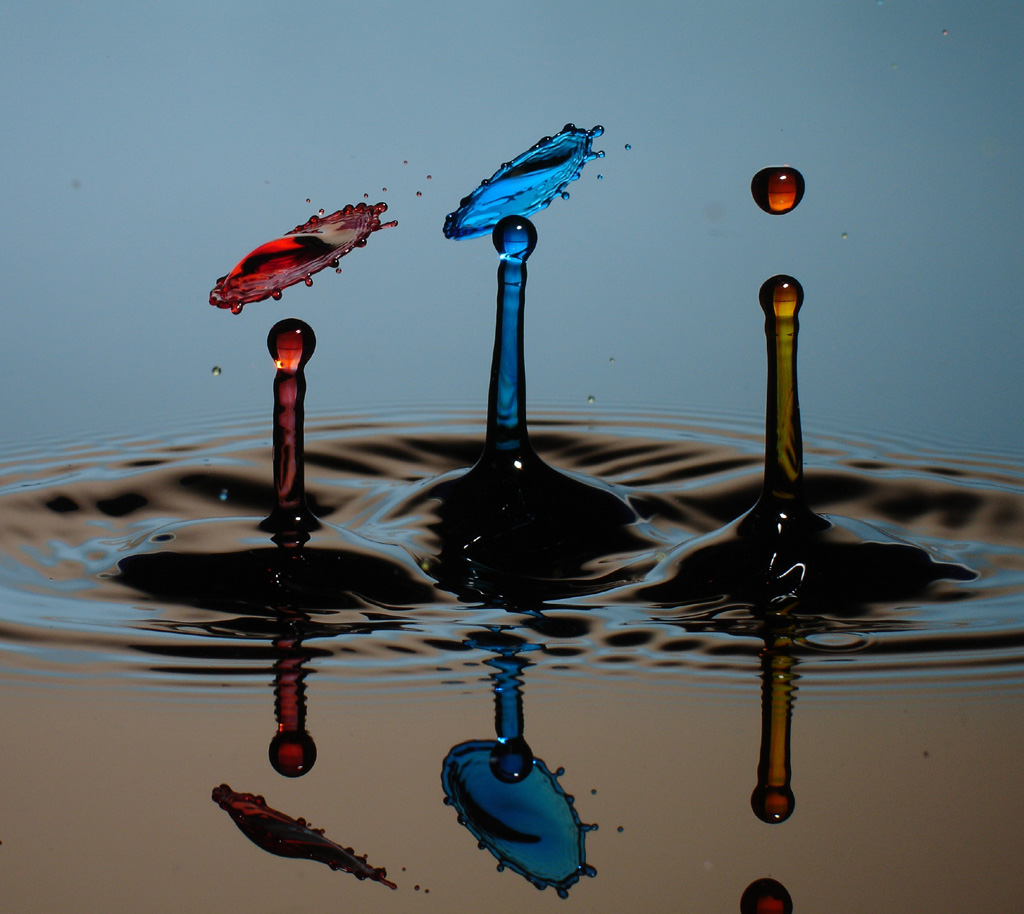 High-Speed flash photography of liquid drops and liquid towers
colliding in 3D is a fascinating and rewarding enterprise. The key is to
release drops from one or more nozzles in a repeatable manner (or at least
in a somewhat repeatable way). Any wind, ripple on the pool surface, dust on the
nozzle, electric charge, etc., can alter the timing, so much of it, even with a
computer controlled pump (which is what was used here), is hit or miss.
Once a first drop hits the pool it sends up a tower. Neat things happen
when you can time a second drop to hit the top of this tower as it's rising.
The collisions "explode" into a capillary disc with lots of edge instabilities.
Needless to say, getting multiple collisions to occur simultaneously
involves patience, and many many tries. To the left is an example of a simultaneous double-hit,
where the right tower has not quite been whacked by the falling red
droplet above it.
Triple-hits were photographed, but were rarer and harder to get.
High-Speed flash photography of liquid drops and liquid towers
colliding in 3D is a fascinating and rewarding enterprise. The key is to
release drops from one or more nozzles in a repeatable manner (or at least
in a somewhat repeatable way). Any wind, ripple on the pool surface, dust on the
nozzle, electric charge, etc., can alter the timing, so much of it, even with a
computer controlled pump (which is what was used here), is hit or miss.
Once a first drop hits the pool it sends up a tower. Neat things happen
when you can time a second drop to hit the top of this tower as it's rising.
The collisions "explode" into a capillary disc with lots of edge instabilities.
Needless to say, getting multiple collisions to occur simultaneously
involves patience, and many many tries. To the left is an example of a simultaneous double-hit,
where the right tower has not quite been whacked by the falling red
droplet above it.
Triple-hits were photographed, but were rarer and harder to get.